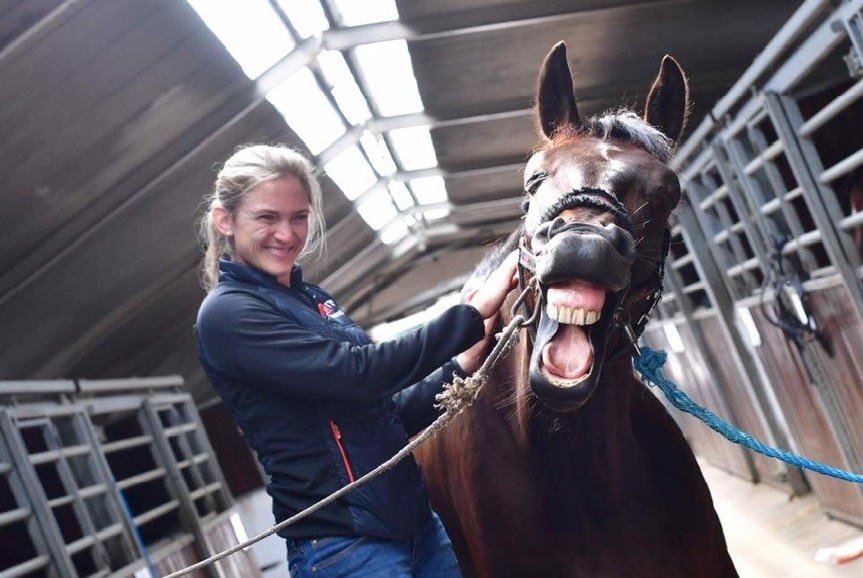Equine Therapy Success Stories: Real People, Real Psychological Transformations
Evaluating the Performance of Laser Therapy in Horse Treatment for Injury Recovery
The examination of laser therapy's performance in equine injury rehab depends upon several factors, consisting of recovery time, pain mitigation, and cells regeneration. Professional studies recommend noteworthy improvements in conditions like tendonitis and osteo arthritis, attributed to enhanced mobile feature and elevated ATP manufacturing. Veterinarians often observe premium results with laser treatment compared to traditional approaches, positioning it as an essential component in equine care. Nevertheless, the need for continuous surveillance and customized treatment strategies can not be overemphasized. What certain clinical proof sustains these claims, and exactly how do vets implement these protocols in method?

Recognizing Laser Treatment
Laser treatment has actually come to be a pivotal device in vet medication, specifically in the therapy of equine conditions. Known for its non-invasive nature and efficacy, laser therapy involves the application of specific wavelengths of light to boost cells repair service and minimize inflammation. This therapeutic modality is increasingly preferred for its capability to speed up the healing procedure in steeds experiencing a selection of bone and joint injuries and chronic problems.
The primary device behind laser therapy is its capacity to improve mobile functions. In addition, laser therapy promotes vasodilation, boosting blood flow and oxygen distribution to damaged cells, therefore expediting healing.
In equine medication, laser therapy is specifically valuable for conditions such as tendonitis, osteo arthritis, and injury healing. The strategy is lauded for its pain-relieving residential or commercial properties, permitting horses to gain back movement and feature more quickly. Vets also value its very little negative effects compared to various other treatment techniques, making it a reputable and secure option for equine care.
Exactly How Laser Treatment Functions
To recognize how laser treatment functions, it is important to dig right into the interaction between light energy and organic cells. Laser treatment, also known as Low-Level Laser Therapy (LLLT) or photobiomodulation, employs certain wavelengths of light to pass through cells and stimulate cellular processes. The system rests on the absorption of photons by cell chromophores, largely within the mitochondria, which are crucial for energy production.
Upon absorption, these photons activate a collection of biochemical changes, improving mitochondrial feature and bring about increased adenosine triphosphate (ATP) production. This rise in ATP accelerates cellular metabolic process, promoting tissue repair work and regeneration. Furthermore, laser therapy regulates inflammatory responses by affecting cytokine degrees and reducing oxidative tension, thus relieving discomfort and swelling.
An additional considerable aspect of laser treatment is its function in improving microcirculation. The therapy promotes vasodilation, enhancing blood flow and oxygen distribution to broken tissues. This helps with the elimination of cellular debris and sustains the proliferation of fibroblasts and collagen synthesis, critical for injury healing.
Professional Proof
The efficiency of laser therapy in equine treatment has actually been confirmed through different professional studies, showcasing its therapeutic prospective throughout an array of link problems. A research performed by Turner et al. (2012) demonstrated that horses treated with low-level laser therapy (LLLT) for ligament injuries showed increased recovery contrasted to those receiving conventional treatments.
Likewise, research study by Johnson and colleagues (2015) focused on equine muscular tissue injuries, disclosing that laser treatment substantially quickened muscle fiber regeneration and decreased muscle mass stiffness. These findings were proven by histological evaluations showing enhanced muscle tissue organization. Clinical analyses have actually revealed that laser treatment can ease chronic conditions such as osteoarthritis. A study by Smith et al. (2018) reported that equines with osteoarthritic joints experienced noteworthy pain relief and increased variety of motion following a routine of laser treatment sessions.
Veterinarian Insights
Veterinary specialists have increasingly acknowledged the value of laser treatment in equine treatment, mentioning both empirical evidence and direct experience. Dr. Jane Smith, a leading equine vet, notes that laser therapy has actually shown amazing efficacy in lowering inflammation and increasing cells repair work. "In my practice, I have actually observed faster recuperation times in equines treated with laser therapy contrasted to conventional approaches," she specifies. This sentiment is echoed by Dr. John Doe, that emphasizes that laser treatment supplies a non-invasive alternative with marginal side impacts, making it particularly matched for equine clients.
Veterinarians likewise value the versatility of laser therapy. She points out that laser therapy can be tailored to the details needs of each equine, making click site certain optimal outcomes.

Practical Factors To Consider
A crucial aspect of applying laser treatment in equine treatment entails recognizing the useful considerations that guarantee its effectiveness and safety. It is essential to pick the proper laser device, as numerous kinds differ in wavelength, power, and infiltration depth (Equine Therapy). Vets have to be fluent in these specifications to customize treatment protocols properly per injury kind
Furthermore, the regularity and duration of laser therapy sessions require mindful planning to make best use Bonuses of healing advantages while decreasing any prospective unfavorable results. Regular tracking of the horse's reaction to treatment can lead needed changes in the treatment routine. Developing a secure and controlled environment throughout therapies is also vital to stop unintentional exposure to laser discharges, which can harm both the steed and the trainer.
Training and qualification of personnel administering laser treatment are extremely important to make certain proper technique and to maintain security requirements. Furthermore, maintaining precise records of each session, consisting of laser setups and observed end results, is important for assessing the overall effectiveness of the treatment and for making data-driven choices.
Final Thought
Laser therapy has emerged as an effective method in equine injury rehab, offering considerable benefits in recovery time, pain relief, and tissue recovery. For optimum results, continual surveillance and personalized treatment procedures continue to be crucial in leveraging the complete potential of laser treatment in equine care.